Earth’s free light show causes chaos for some… but not so much for Trimble customers
As night fell on May 10, 2024, millions of curious people across the globe ventured outside in hopes of catching a glimpse of the northern lights in the darkness — and better yet, capturing a spectacular photo. Previously visible only in arctic regions, this phenomenon came into view as far south as Alabama and California as the night’s aurora borealis revealed itself, etching the moment into our memories. And it all became possible thanks to solar activity being at nearly a 20-year high.
But what was a sense of beauty and wonder for many also served as a time of concern and even angst for those who either provide or rely on accurate positioning from satellites. This unusual phenomenon was caused by a G5 level geomagnetic storm that lasted two days — making it the most significant geomagnetic storm descended on Earth since 2003. NOAA’s Space Weather Prediction Center measured its Estimated Planetary K-Index (Kp index) — a common metric-based gauge for geomagnetic storms — on a 9 point scale, on which it hit maximum values at various monitoring stations.
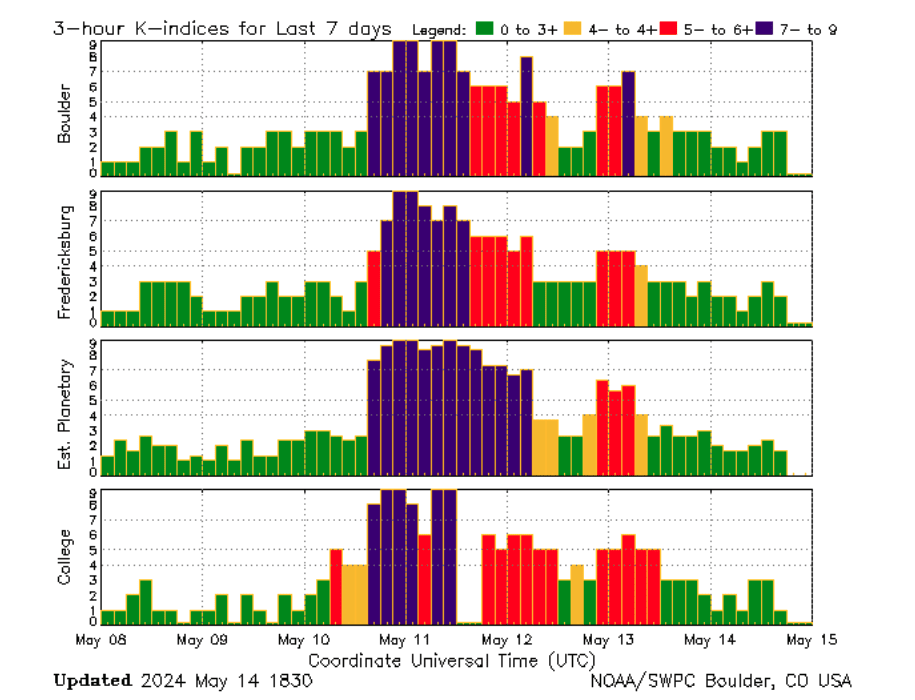
The aurora borealis sets the stage to gauge Trimble IonoGuard
This provided the ultimate opportunity to field test the performance of Trimble IonoGuard™, as Dr. Stuart Riley, Trimble VP of technology - GNSS, notes in this LinkedIn post. IonoGuard, unveiled in October, is the culmination of Trimble’s decades of data collection and engineering development. Purposefully designed to help mitigate the impacts of ionospheric disturbances on GNSS performance with ample signal tracking change capabilities, this solution estimates various parameters on a per-satellite basis, adjusting the position engine to maintain accuracy.
Due to seasonal effects and the nature of this storm, it was expectedly less impactful in equatorial regions, while significant effects were seen in polar and mid-latitude areas. Riley’s post focuses on the effects seen at a site in Northern Alberta, Canada (around 57 degrees north latitude).
Looking at this Northern Alberta GNSS receiver on a 1.8 km RTK baseline, we see that when the ionospheric disturbance begins around 18:00 hours UTC on May 10, with significant “noise” seen in the position solution. While a GNSS receiver without IonoGuard struggles to maintain an RTK-fixed solution mode, RTK-fixed operation drops below 91% (18:00 May 10 through 10:00 May 12, UTC), and even then, outliers are seen in the RTK-fixed position, as shown below:
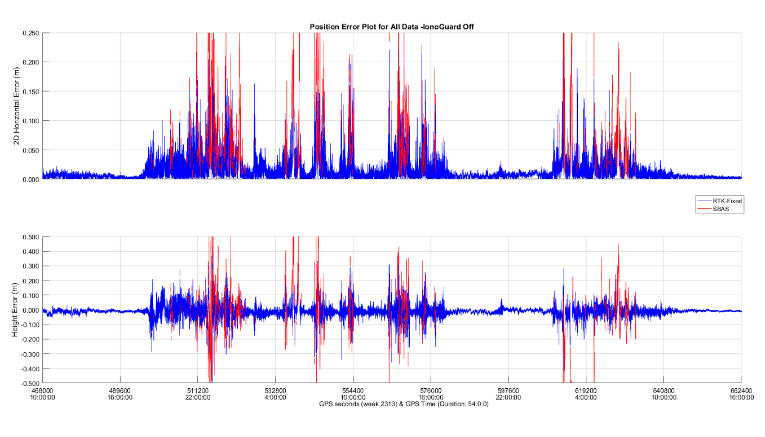
Conversely, a GNSS receiver on the same antenna running IonoGuard technology reflects a dramatic improvement in positioning performance. The system now maintains an RTK-fixed solution mode throughout the entire geomagnetic storm.
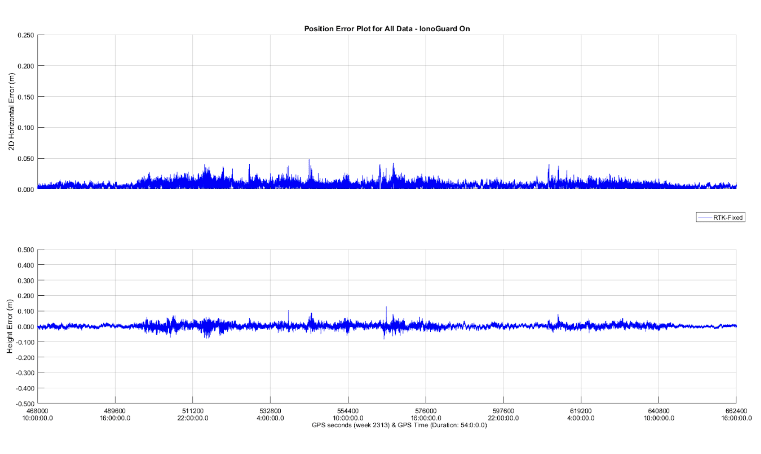
Some limited impact is seen from the ionospheric disturbance; however, users in areas affected by scintillation and other disturbances reported being able to work through any issues using IonoGuard, while other machines were forced to stop due to positioning inaccuracies.
This dramatic improvement in performance is achieved by quantifying ionospheric disturbance on individual satellites, characterized using three different metrics formulated by decades of Trimble research and development to indicate scintillation and other ionospheric disturbances. The plot below indicates how individual satellite signals are affected by ionospheric disturbance. Note: not all satellites are affected equally at the same time, allowing us to form a “best” solution by picking out the “good” satellites.
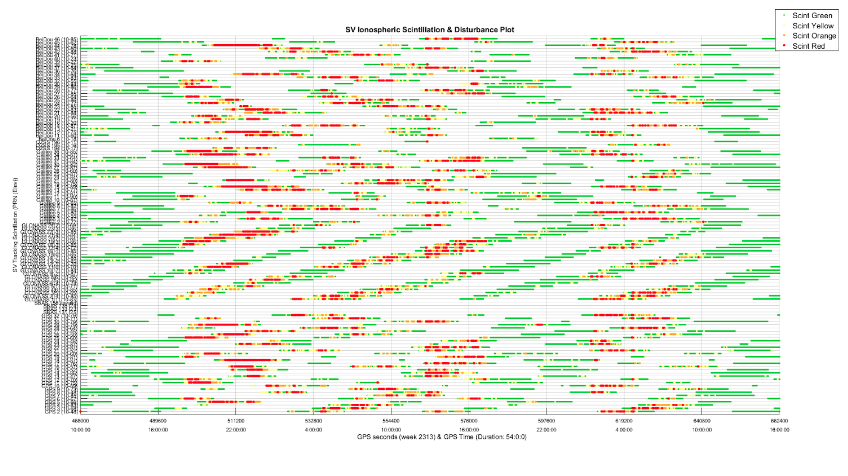
While Northern Alberta may seem like an extreme case, reports reveal that the storm shut down some operations relying on GPS/GNSS systems throughout the north-American midwest region during peak planting season. Looking at the IonoGuard metrics in the Denver, CO., area (about 40 degrees north latitude), less ionospheric disturbance was seen — yet there were enough operational GNSS shutdowns reported to warrant a mention on the news.
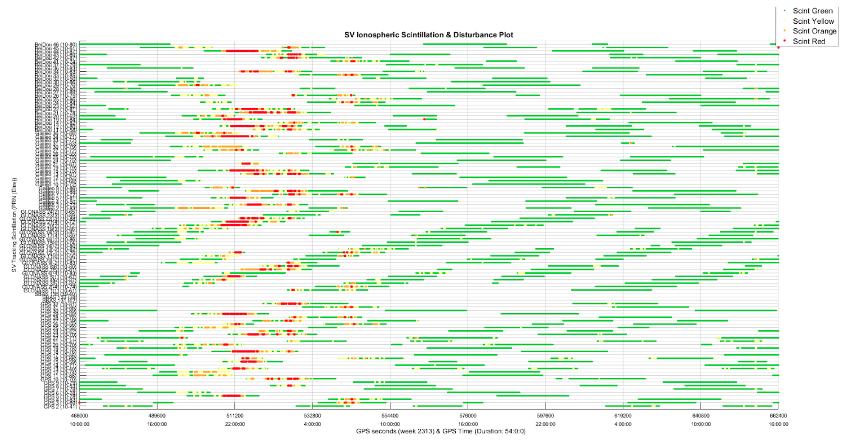
Interestingly, the effects seen in Munich, (about 48 degrees north latitude) are almost negligible for this storm; however, that may not be the case for future storms. As we approach the “solar maximum,” Trimble IonoGuard will work round the clock to keep you working.
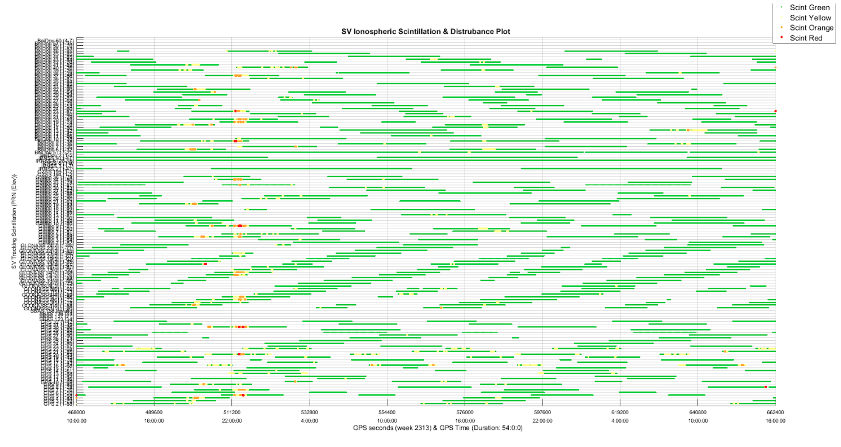
Drawing its strength from decades of meticulous data collection and engineering expertise, IonoGuard demonstrates Trimble’s commitment to staying a step ahead of problems — providing our customers with uninterrupted coverage they can depend on.
Learn more about Trimble IonoGuard by visiting our website and/or downloading the technical paper. And keep watching for additional blog posts related to the beneficial effects of IonoGuard in other parts of the world.
Flare facts:
- The May 2024 geomagnetic storm (solar flare) reached the "G5" level for the first time since 2003, garnering extensive media coverage.
- It provided a spectacular display of northern and southern lights as far south as Alabama and California, providing rare photo opportunities.
- Significant disruption to radio signals resulted, including GNSS satellite signals used for day-to-day vehicle guidance and navigation.
- Many major suppliers warned customers, with a widespread impact on farming tractor guidance systems during peak planting season.
- Trimble’s IonoGuard technology enabled RTK customers to continue operating without major disruption.